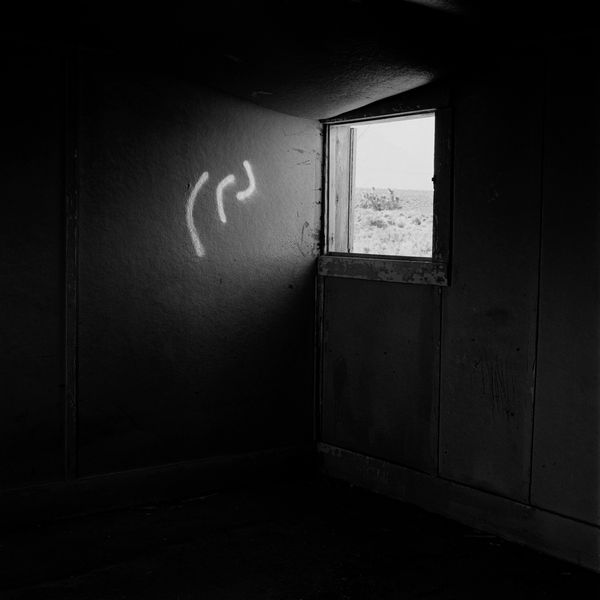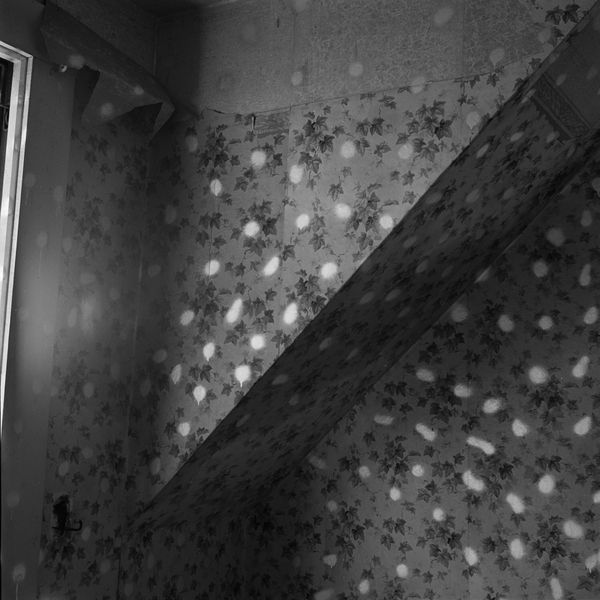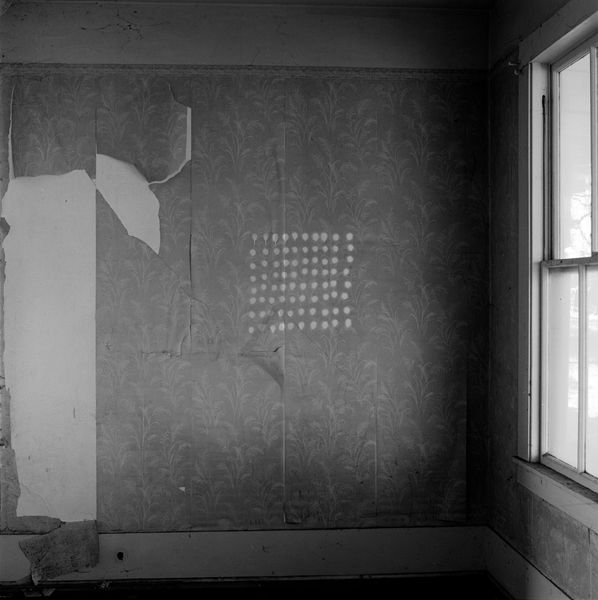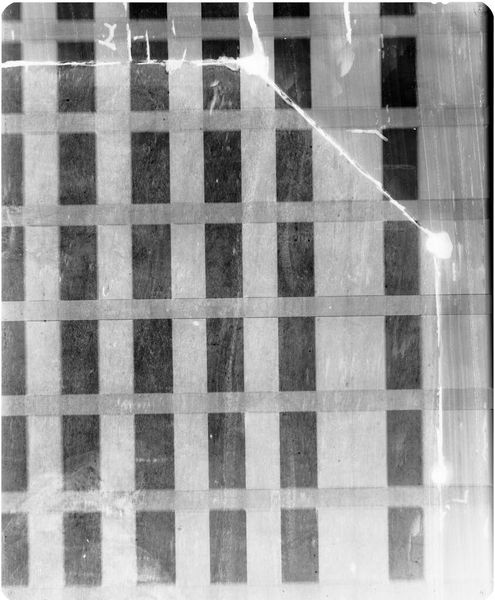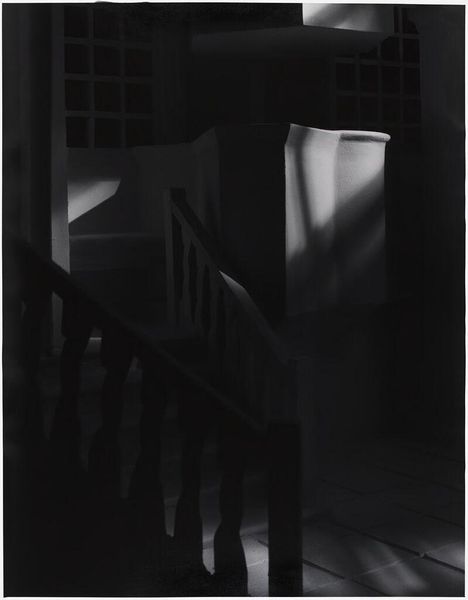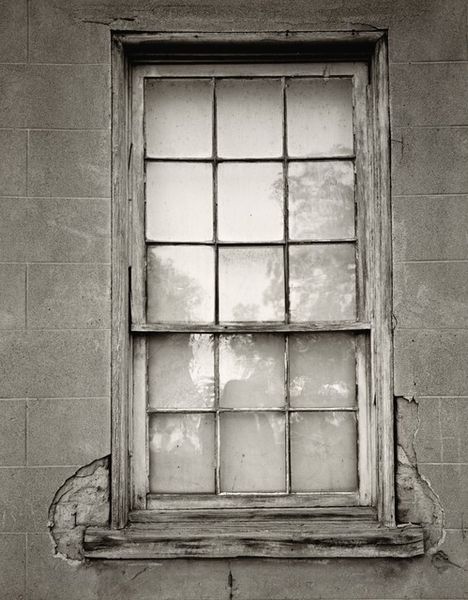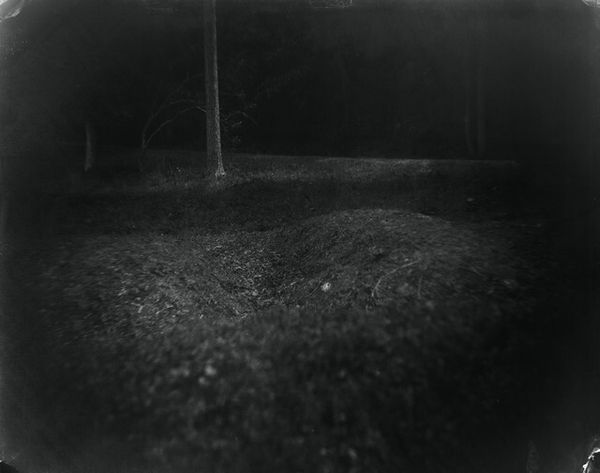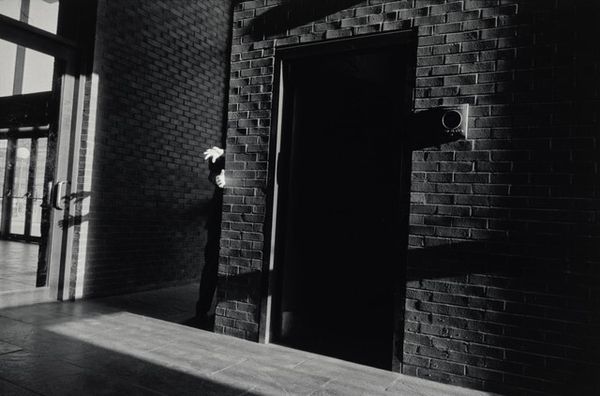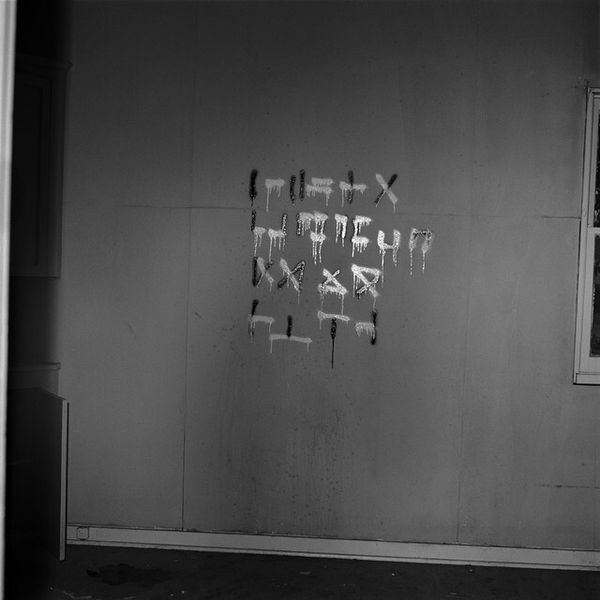
photography
#
light-and-space
#
abstract
#
photography
Dimensions: image: 34.93 × 34.93 cm (13 3/4 × 13 3/4 in.) mat: 62.23 × 59.69 cm (24 1/2 × 23 1/2 in.) framed: 64.14 × 61.6 × 3.81 cm (25 1/4 × 24 1/4 × 1 1/2 in.)
Copyright: National Gallery of Art: CC0 1.0
Editor: We're looking at "74V43," a black and white photograph by John Divola, likely created between 1973 and 1993. The scene shows an interior space, light piercing through window openings casting dot patterns on a worn floor. There's almost a playful quality to this bleak setting. What do you see in this work? Curator: I see a critical commentary on space and light as commodities. Divola utilizes the most basic photographic materials – light, film, and a derelict room – to craft an image. The material reality of the abandoned space, that decaying linoleum and the visible lack of care, speaks volumes about societal neglect. Editor: So you see the image less as a study of light itself, and more as an indictment of social conditions? Curator: Precisely. Consider the artist's process: Divola isn't just capturing light, but manipulating it, intervening in this neglected space. The photographic act becomes a means of drawing attention to the inherent worth, or lack thereof, placed on certain spaces and the people who might inhabit them. What labor went into making this image beyond simply snapping a photo? Editor: That's interesting. I hadn’t considered the implications of Divola’s presence and intervention in the space. It highlights the artistic process as a form of, well, almost gentrification of the image, even if not the physical space. Curator: Indeed. The very act of photographing, of transforming this neglected space into art, implicates the artist – and us, the viewers – in a system that often prioritizes aesthetic value over lived experience. A beautiful, intriguing piece but also morally questionable when one thinks about it deeply. Editor: I'm now seeing the work as much more than an aesthetic arrangement of light and shadow. Thanks to your insight, I appreciate how it critically engages with materiality, labor, and the socio-economic context.
Comments
No comments
Be the first to comment and join the conversation on the ultimate creative platform.
